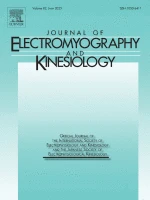Josef Fischer a, Christian Burger a, Josefina Manieu Seguel a, Coşkun Rodoplu b, Florian Kurt Paternoster c, Markus Tilp a, Andreas Konrad a
a Institute of Human Movement Science, Sport and Health, University of Graz, Austria
b Bursa Uludag University, Turkey
c Department of Biomechanics in Sports, TUM School of Medicine and Health, Technical University of Munich, Germany
Abstract
This study investigated muscle excitation via surface electromyography (sEMG) during different ranges of motion (ROMs) in the prone barbell row. Sixteen resistance-trained males performed a 10-repetition maximum (10RM) across three ROMs: full, upper half, and lower half. Time under tension was standardized at 2 s for both the concentric and eccentric phases. SEMG measurements were taken for the trapezius transversus (TT), rear deltoid (RD), latissimus dorsi (LD) and biceps brachii (BB). Mean sEMG amplitude and peak sEMG amplitude were analyzed. The LD showed significantly higher mean muscle excitation in the upper-half ROM compared to both the lower-half ROM (p < 0.001, d = − 0.59) and full ROM (p < 0.001, d = − 0.58). The TT exhibited significantly lower peak excitation in the upper-half ROM compared to the lower-half ROM (p = 0.042, d = 0.42) and full ROM (p = 0.013, d = 0.54). For the other muscles, no significant difference between the ROMs was found. The effect of ROM during the prone barbell row exercise on muscle excitation was of a medium magnitude only, as well as inconsistent, suggesting that ROM adjustments with standardized time under tension have limited impact on overall muscle activation.
